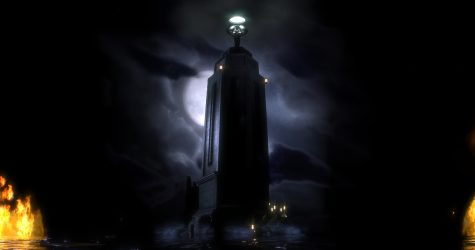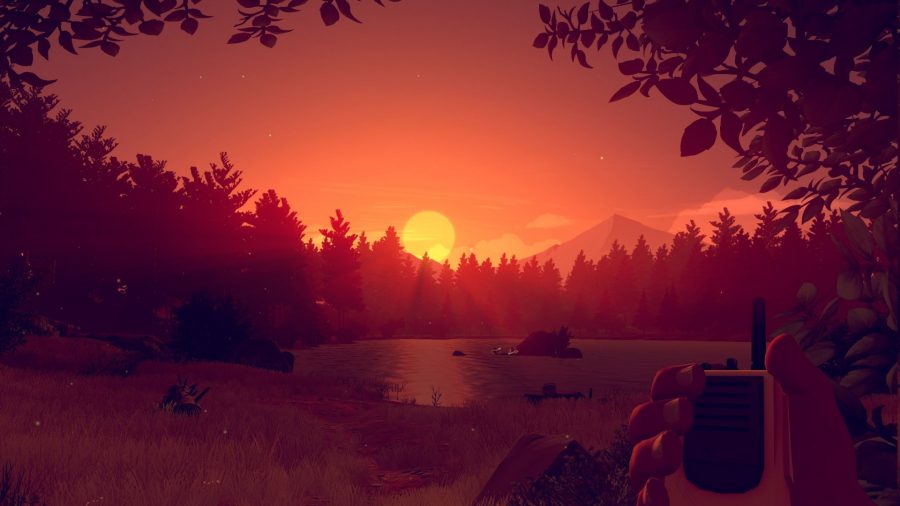The Age of Video Games as Art
January 25, 2017
“When we watch a film, the director is essentially standing behind us and saying, “Look here,” and “Look there,” “Hear this,” and “Hear that,” and “Feel this,” and “Feel the way I want you to feel.” And we give up conscious control over our intelligence. We become voyeurs. We become people who are absorbed into the story, if the story is working. And it’s an emotional experience.” – Roger Ebert
Paintings, sculptures, music, film: these are all art, yes? Just about everyone can think of a creation that they consider art, but how many would look to video games as a medium for art, let alone consider it as one? Naturally, many criticize games for their overt violence and explicit themes, with the Call of Duty and Grand Theft Auto series receiving the brunt of the criticism.
The dictionary definition of art is the “expression or application of human creative skill and imagination…to be appreciated primarily for their beauty or emotional power”, and under these criteria, some games are definitely art. No doubt, the bulk of people who claim this are gamers, myself included.

Of course, the claim that games are art doesn’t sit well with all, particularly those who don’t play video games. There’s a clear divide between those who deem games as a childish creation and those who truly believe they are the next great art form. Roger Ebert, one of the most prolific film critics of our time, once wrote that video games cannot be art and that “no video gamer now living will survive long enough to experience the medium as an art form.” But is this actually true?
Long gone are the days of pixelated graphics à la Space Invaders and the simplistic end goal of “save the girl” in Donkey Kong. Now, there’s story; there’s substance. Even Ebert himself said it was a “foolish position to take,” considering his lacking experience with video games.
Consider the amount of hours necessary for the creation of games, and what the creation of their respective worlds entail. Narrative-based games rely on atmosphere, formed by art direction as well as sound design, and writing. Lots of writing.
The Witcher 3: Wild Hunt—released for PS4, Xbox One, and PC in 2015—was critically acclaimed for its meticulously crafted world, and many others also claimed it to be one of the greatest role-playing games ever made. Of course, this is no coincidence, as the script for the game ran about 450,000 words long. For reference, this is roughly equal to 4 ½ copies of To Kill A Mockingbird.
https://youtu.be/zjZlQpbT58I?t=89
Game designers are essentially directors for scenes, especially evident in this particular scene from The Witcher 3. Consider how the very deliberate camera shots emphasize the stillness of the scene, and how the music plays with the gradual building of dread and fear of losing a loved one.
But this scene is the product of some 50 hours of gameplay. That 450,000-word script equates to a whole lot of character building, not to mention the added character building of the previous games as well as the six books prior. Essentially, the two characters in the scene are father and daughter, and all the background information gives us an insight into their relationship—circumstances that would make their bond even stronger.

Story-driven games often highlight human realities such as loss and relationships. When they’re done right, they elicit real emotion; in recent memory, The Last of Us—released for PS3 in 2013— was particularly infamous for its shocking opening scene. In spite of its post-apocalyptic zombie scenario, scenes such as the death of Joel’s daughter carry emotional weight because they are grounded in reality. Death is a tragic part of everyday life, and for game developers, the art lies in being able to capture those aspects of life accurately and grippingly.
And no, Call of Duty is not an accurate representation of all that a video game can be, for all of those who would shun video games for excessive violence. You need context—something that makes death more than just for cannon fodder.
To say that video games cannot be a medium for art does a disservice to the very legitimacy of the work and undermines the thousands of manhours often required to produce these games. It’s a labour of love from the developers, a story that’s itching to be told properly. And all of that shows in the final product: a lighthouse that guides other developers through a sea of bland, carbon-copy games.







Alan Tang • Jan 26, 2017 at 6:22 am
Like art, video games create communities that enjoy the thing that they all love, take it from me, me and my friends play similar video games because it’s something we all like. Plus video games in today’s world has more touching stories take The Last of Us for example, it is a very touching story and no spoilers. But a recent example is Undertale, it has changed how RPGs work, you don’t have to kill enemies, you can befriend them. Also, its story has many routes and in one route, you have to see the characters as real people but how is it like art? Art has many forms and many new forms are made, Undertale changed the way video games can be made.
Those who say video games are not art, are wrong because as stated in the article, art is a way of expressing human imagination. Video Games take a lot of creative imagination to make, video games have so many unique and beautiful worlds that we can interact with which is something paintings can’t do. You can’t physically interact with what’s in the paining, in video games you can. Take Skyrim for example, it has a very beautiful landscape and you can control your character to look around.
But what about retro games aka games from the 80s, they can be seen as art, on the internet, many people make sprites to do something amazing. I too make sprites to make art and old video games can be seen as art. If we can appreciate the old paintings as art, we can appreciate the look of old video games.